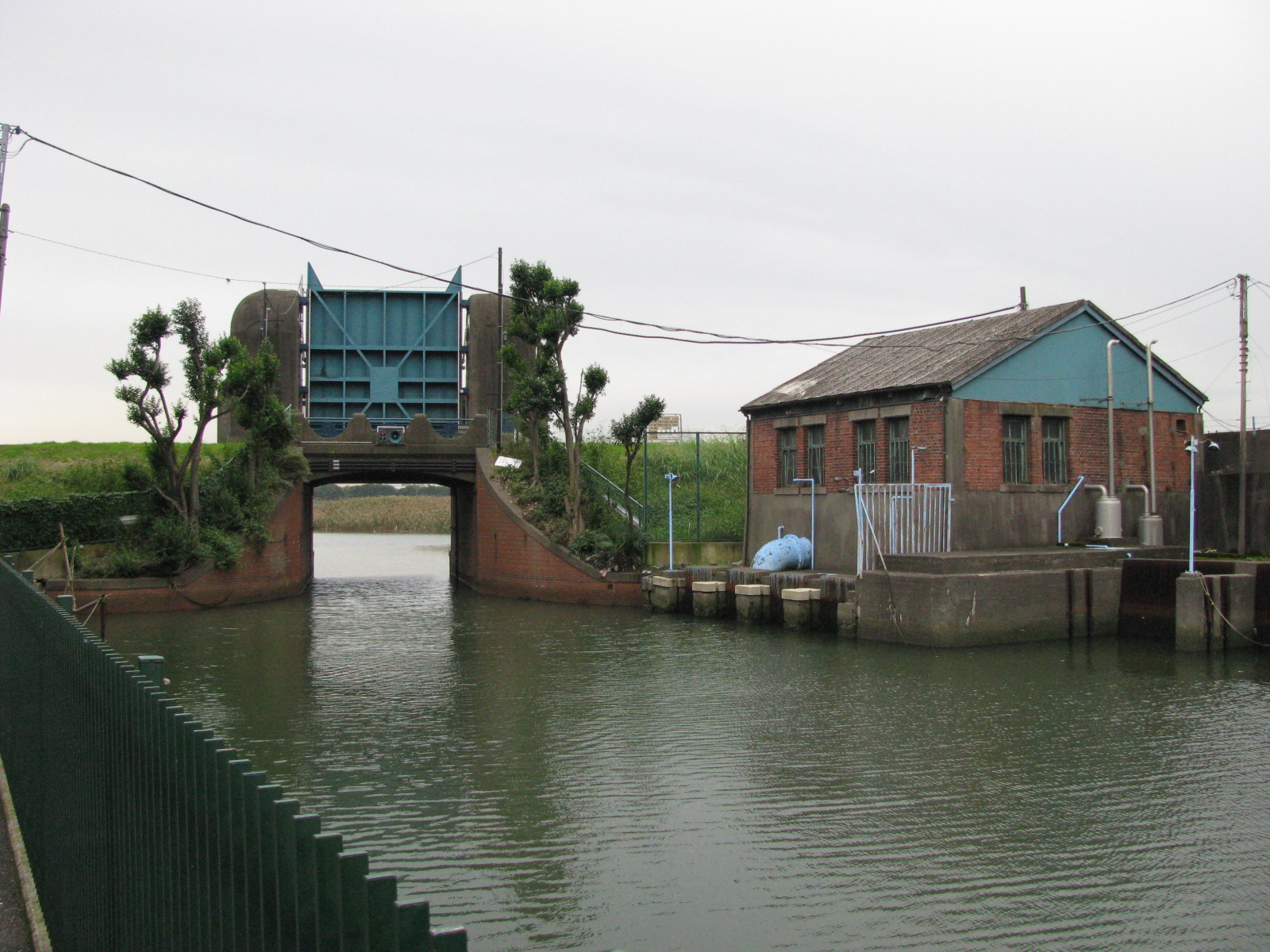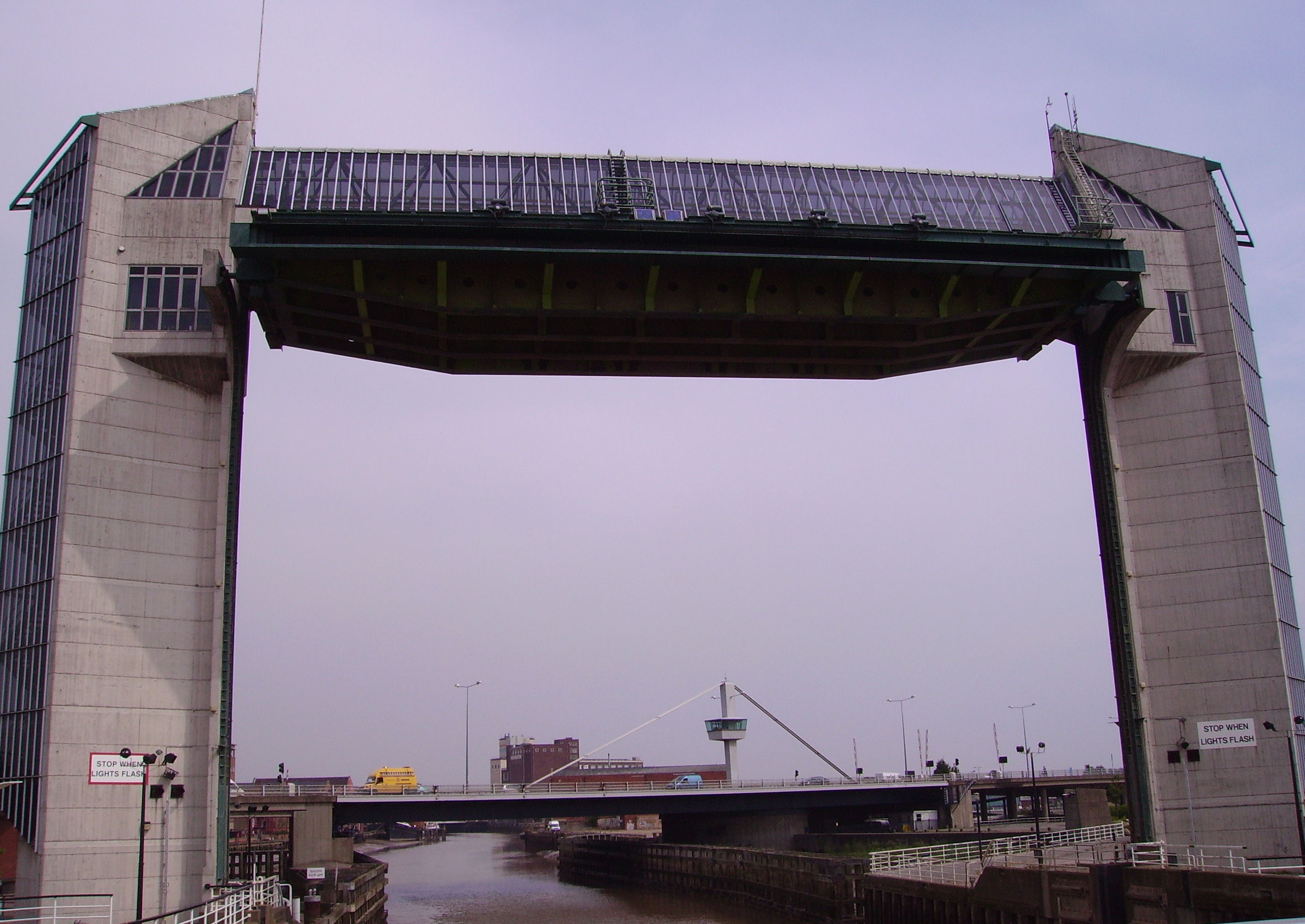Definition
These barriers are made of a single or pair of rigid sections (usually steel or fibreglass), designed to close a gap within a flood defence. They are normally fully pre-installed and only require closure during an emergency. The closure operation can be manual, semi-automated or automatic. Automatic operation can be controlled by sensors and actuators, or by direct hydraulic link to the watercourse. They are normally attached to an adjacent structure or permanent protection or laid flat into a recess within the ground. Manual closure normally involves swinging, rolling or raising into position (Ogunyoye F. et. al, 2011, p.57).Co-benefits and impacts
The main advantages of flood gate are that no installation or construction required during event, they are easy and quick operation. No off-site or transportation is required for measure's implementation and they are stable and high resistant to impacts. On the other hand, defence height cannot be increased during service, there is a possibility of failure of mechanical part or electricity supply, cover or structure can get jammed with debris and there is a risk of conflict of dual use with automatic operations (Ogunyoye F. et. al, 2011, p.57).Definition (GR)
Αυτά τα φράγματα είναι κατασκευασμένα από ένα ή δύο άκαμπτα τμήματα (συνήθως ατσάλι ή υαλοβάμβακα) και έχουν σχεδιαστεί για να φράσσουν ένα διάκενο της αντιπλημμυρικής κατασκευής. Είναι συνήθως πλήρως προεγκατεστημένα και απαιτείται η φραγή του νερού μόνο κατά τη διάρκεια μιας έκτακτης ανάγκης. Η λειτουργία του μηχανισμού φραγής μπορεί να είναι χειροκίνητη, ημιαυτόματη ή αυτόματη. Η αυτόματη λειτουργία μπορεί να ελέγχεται από αισθητήρες και μηχανισμούς ενεργοποίησης ή με άμεση υδραυλική σύνδεση με το υδάτινο ρέμα. Συνδέονται κανονικά με μια παρακείμενη υποδομή ή ένα μέτρο μόνιμης προστασίας ή τοποθετούνται επίπεδα σε μια εσοχή μέσα στο έδαφος. Η χειροκίνητη λειτουργία φραγής συνήθως περιλαμβάνει ταλάντευση, κύλιση ή ανύψωση σε κατάλληλη θέση (Ogunyoye F. et. al, 2011, p.57).Co-benefits and impacts (GR)
Τα κύρια πλεονεκτήματα των θυροφραγμάτων είναι ότι δεν απαιτείται εγκατάσταση ή κατασκευή κατά τη διάρκεια του πλημμυρικού γεγονότος, και η λειτουργία τους είναι εύκολη και γρήγορη. Για την εφαρμογή του μέτρου δεν απαιτείται καμία εγκατάσταση ή μεταφορά και τα φράγματα είναι σταθερά και ανθεκτικά στην ορμή του νερού. Από την άλλη πλευρά, το ύψος της αντιπλημμυρικής κατασκευής δεν μπορεί να αυξηθεί κατά τη διάρκεια της λειτουργίας, υπάρχει πιθανότητα βλάβης του μηχανισμού ή της παροχής ηλεκτρικού ρεύματος, η υποδομή μπορεί να μπλοκαριστεί από τα φερτά υλικά και υπάρχει κίνδυνος δυσλειτουργίας των αυτόματων μηχανισμών (Ogunyoye F. et. al, 2011, p.57).Scales
Scales to which this measure can be applied.
Land uses
Land uses in which this measure can be applied.
Flood management measure
The parent measure, in terms of this measure being a subcategory of the parent one
Case studies
Last modified: March 4, 2020, 8:50 a.m.


 Ελληνικά
Ελληνικά

